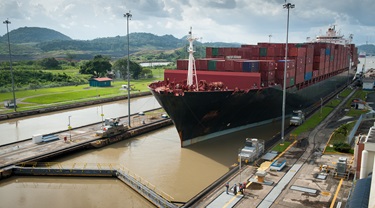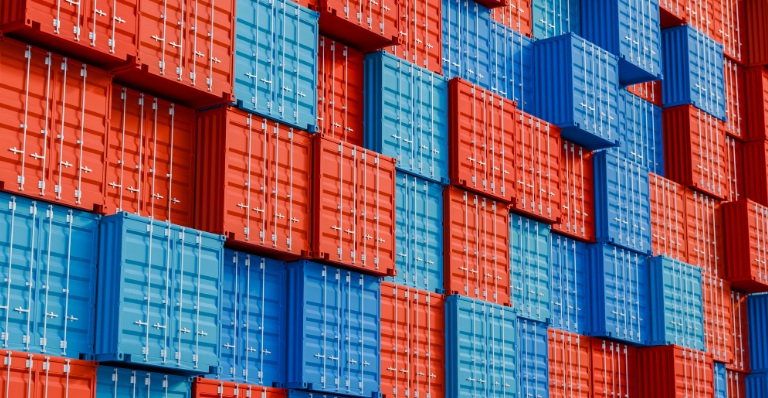Supply chain woes are back. Just as the global economy appears to be getting past the effects of pandemic-era disruptions, Iranian-backed Houthi rebels have mounted more than 30 attacks on ships passing through the Red Sea. This critical maritime gateway typically accommodates around 15% of global sea trade, including 8% of seaborne grain, 12% of crude oil and 8% of liquified natural gas (LNG).
In response, major shipping lines have rerouted ships around the Cape of Good Hope, adding both time and cost to shipping routes. By the beginning of this year, freight capacity in the Red Sea had plummeted 63% from mid-October levels, according to the Kiel Institute for the World Economy.
Ensuing delays have knock-on effects, as ports backlogs build, and ship availability becomes less predictable. The longer journey, which can take anywhere from an additional 10 days to two weeks, also adds to fuel and wage costs. Insurance premiums are also increasing for some ships in the region. As a result, shipping rates along the Shanghai-Rotterdam route have risen 153%. These costs will eventually find their way to consumer prices, pressuring inflation at a time when central banks seem to finally be making progress on that front.
So, will the challenges in the Red Sea substantially impact Canada? So far, it seems that the economic effects of the conflict in the Middle East have largely been contained, with energy markets remaining eerily docile (perhaps the subject of a future column). That’s not to say that crude oil prices couldn’t spike in the event of a wider conflict. Additionally, as geopolitical tensions increase, heightened global risk sentiment could widen spreads, tightening global financial conditions further. All-out war would also hit confidence more generally, causing global demand to suffer.
You should also check out
With growing risks, Canadian companies face new challenges. EDC’s Global Economic Outlook offers insights to help you make better business decisions.
We also need to remember that our own supply chains aren’t risk-free. Last year, Canada experienced short-term disruptions when labour action jeopardized operations in British Colombia ports, which handle roughly 25% of Canada’s total trade. A deeper examination in our 2023 Sectors in focus report, revealed that the 13-day strike disrupted $8.6 billion of cargo, leading to a $113 million loss for the Canadian economy.
What’s more, another important global shipping lane is also causing a slowdown in maritime traffic. Climate-related drought has caused the Panama Canal, which usually supports about 8% of global maritime trade and 40% of U.S. container traffic, to operate at only 55% of its normal capacity. The number of ships using the canal declined by 10% in 2023, with authorities recently cutting daily passage from 36 to 24 ships and planning to further reduce transit to 18 ships in February.
The extent of the impacts on global supply chains and inflation will depend on how long both logjams last, and whether other snags pop up in the meantime. While the Federal Reserve Bank of New York’s Global Supply Chain Pressure Index is well off its December 2021 peak, it’s showing signs of agitation.
Some companies already have a playbook for these scenarios, developed to combat pandemic-related disruptions. They’ve invested in new factories and distribution centres, re-engineered existing ones and leveraged the use of smart technologies to help boost supply chain resilience. Many companies have standardized products and processes, in order to move away from country-specific production and make it easier to shift activity from one factory to another. Still others have adopted new supply-chain risk management practices, shifting from just-in-time delivery to just-in-case inventory.
Authorities, too, have a role to play, investing in the resilience of crucial trade corridors. Mexico’s ambitious interoceanic corridor comes to mind. The $2.8-billion Isthmus of Tehuantepec initiative, linking the Gulf of Mexico to the Pacific Coast, highlights the opportunity for investment in rail infrastructure and ports as a means of fortifying North America’s supply chain.
The bottom line?
Four years of frequent supply chain challenges are an important wakeup call around the vulnerabilities of our trade infrastructure to the impacts of geopolitics, climate change, and human error. Our most recent Trade Confidence Index found that 40% of respondents consider supply chain issues as a risk to their business.
While the current wave of disruptions will ebb and flow, this new resiliency imperative will be a key feature of global trade and financial flows not just over the next year, but possibly for decades to come. Canadian exporters must be aware, stay vigilant and plan logistical strategies for times of disruption.
This week, special thanks to Ryan Fung, junior associate at EDC Economics.
As always, at EDC Economics, we value your feedback. If you have ideas for topics that you’d like us to explore, please email us at economics@edc.ca and we’ll do our best to cover them.
This commentary is presented for informational purposes only. It’s not intended to be a comprehensive or detailed statement on any subject and no representations or warranties, express or implied, are made as to its accuracy, timeliness or completeness. Nothing in this commentary is intended to provide financial, legal, accounting or tax advice nor should it be relied upon. EDC nor the author is liable whatsoever for any loss or damage caused by, or resulting from, any use of or any inaccuracies, errors or omissions in the information provided.





